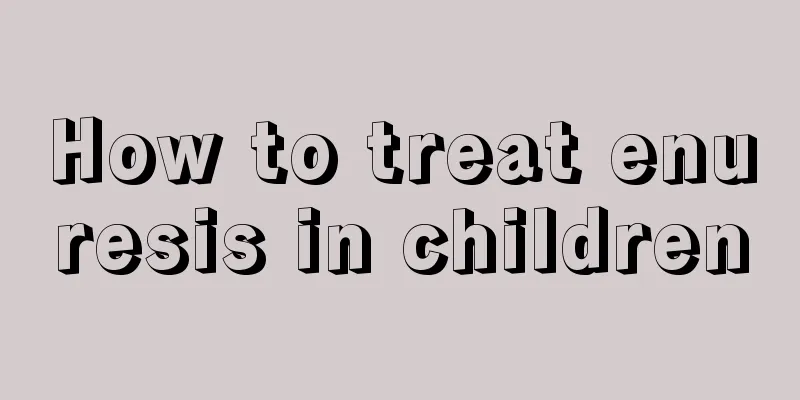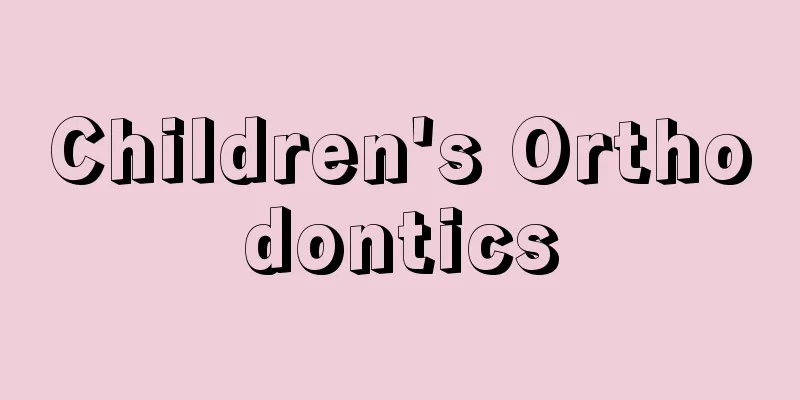How to treat enuresis in children

|
Enuresis is a common pediatric disease with a relatively high incidence rate. It is more likely to occur in Europe, America and Asia, and most of the cases occur in preschool children. Some parents may often scold their children for bedwetting, or even teach them a lesson many times, but find that repeated lessons have no effect. This should be considered because it is not necessarily related to the child's failure to urinate properly, but may be due to pathological factors. Enuresis is a common disease in pediatrics with a high morbidity rate. Data show that the incidence of enuresis among children in Europe and the United States is 3.8% to 18.9%; in Asia, the incidence of enuresis among preschool children is as high as 21.0% to 27.8%, and among school-age children it is 6.9% to 11.2%. This disease can affect the quality of life of children. Some children may also have underlying diseases and concomitant urinary system and nervous system diseases. Children with enuresis often show symptoms of inferiority, anxiety, poor social adaptability, and even serious mental and psychological problems, which can persist into adulthood. Since most cases of enuresis can heal themselves, doctors and parents often fail to pay enough attention to the dangers of enuresis, causing children with the disease to lose the best opportunity for treatment. Studies have shown that enuresis can be caused by abnormal factors in the nervous, endocrine, psychological, urinary system anatomy and function. The occurrence and severity of enuresis are often closely related to the child's living habits, family education and timing of treatment during his or her growth. In recent years, early diagnosis and standardized treatment of enuresis have attracted great attention from scholars at home and abroad. 1. Diagnosis of enuresis Nocturnal enuresis in children refers to involuntary urination at night at least twice a week on average in children aged ≥5 years, which lasts for more than 3 months. Key points for diagnosis include: ① The child is ≥5 years old (5 years old is a subjective age standard for judging nocturnal enuresis in children, but it reflects the development level of children's urination control ability); ② The child urinates involuntarily during sleep, ≥2 times a week, and lasts for more than 3 months (children who occasionally urinate due to fatigue or drinking too much water before going to bed are not considered pathological); ③For older children, the diagnostic criteria can be appropriately relaxed regarding the frequency of nocturnal enuresis. 2. Classification of Enuresis Enuresis can be divided into primary nocturnal enuresis (PNE) and secondary nocturnal enuresis (SNE); or monosymptomatic nocturnal enuresis (MNE) and non-monosymptomatic nocturnal enuresis (NMNE). Primary enuresis refers to bedwetting that continues from infancy, without a bed-free period of more than 6 months, and excluding secondary factors such as congenital diseases, urinary tract infections, neuromuscular diseases, etc.; secondary enuresis refers to bedwetting after a bed-free period of more than 6 months. The most common clinical condition is primary enuresis. Monosymptomatic nocturnal enuresis refers to bedwetting only at night, normal urination during the day, and no anatomical or functional abnormalities of the urinary system and nervous system; non-monosymptomatic nocturnal enuresis is also called complex enuresis, which refers to bedwetting at night accompanied by lower urinary system symptoms (such as bladder irritation symptoms, urinary incontinence, etc.) during the day, and is often secondary to urinary system or nervous system diseases. 3. Treatment of enuresis The pathogenesis of primary enuresis in children mainly includes three aspects: delayed or impaired development of the sleep-wake response to bladder filling, insufficient secretion of antidiuretic hormone at night, and reduced functional bladder capacity at night. Before starting treatment for enuresis, an enuresis assessment should be conducted to determine the condition and develop appropriate treatment measures. The evaluation includes: determining whether it is enuresis, whether there is an underlying disease, clinical manifestations and classification, possible pathophysiological mechanisms or causes, living habits, previous treatment experience, and the patient's and parents' enthusiasm, compliance and tolerance for treatment. |
<<: What causes pain in the child's feet?
>>: Children's oral anesthesia
Recommend
How to cure a child's stuttering?
The stuttering problem in children must be treate...
What are the developmental indicators of babies at 17 months?
For a long period after giving birth to a baby, p...
How to treat a baby crying while sleeping
When babies cry while sleeping, our parents don’t...
What is the cause of congenital choledochal cyst?
The birth of a child brings joy to a family, but ...
What are the reasons why children don't grow taller?
Nowadays, the height growth of children is a big ...
Why does my baby cough while sleeping?
Coughing is a respiratory problem that is unavoid...
Why does a child's head sweat?
In life, sweating is actually a very normal physi...
What is the cause of the hard lump on the child's wrist?
The physical health of children is very important...
Treatment for pimples on children
The incidence of pimples on children's bodies...
What's wrong with a newborn baby crying after pooping?
It is very common for newborns to poop, but it is...
Why does my baby keep blowing bubbles from his mouth?
Every baby is the treasure of the family. We hold...
What is the normal vision of a 4-year-old child?
The vision of a 14-year-old child is the same as ...
Two months old baby has white spots on forehead
We all know that babies are particularly prone to...
Why does my baby sweat a lot in summer?
Many people sweat a lot, but if this phenomenon o...
Can babies wear gold?
Children nowadays are very pampered. Although the...









